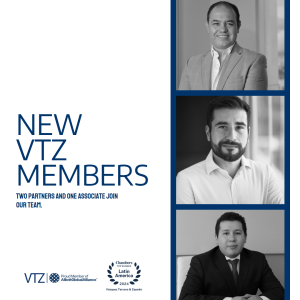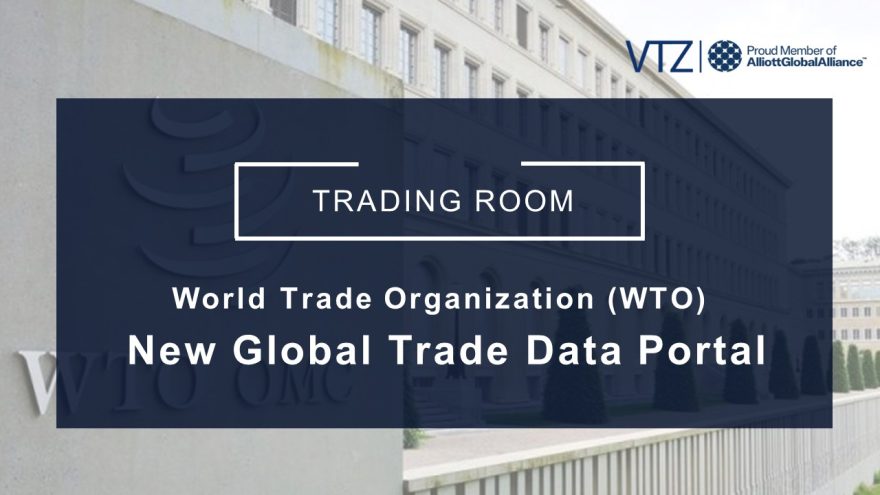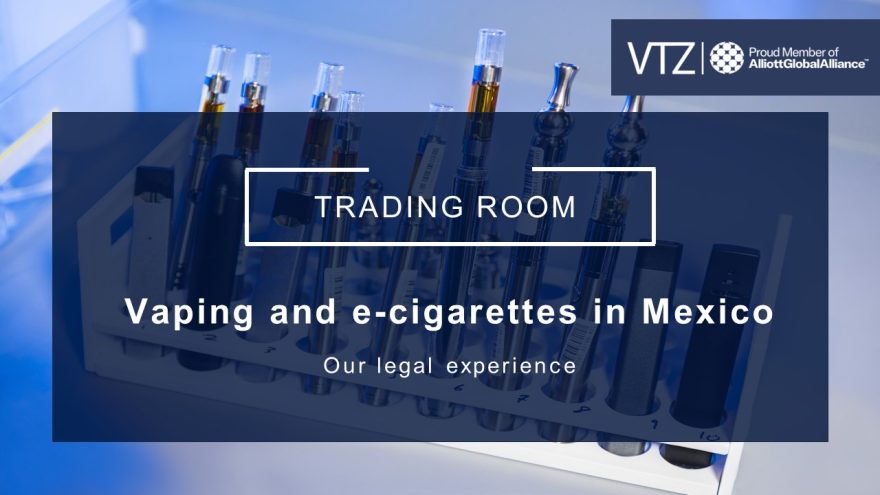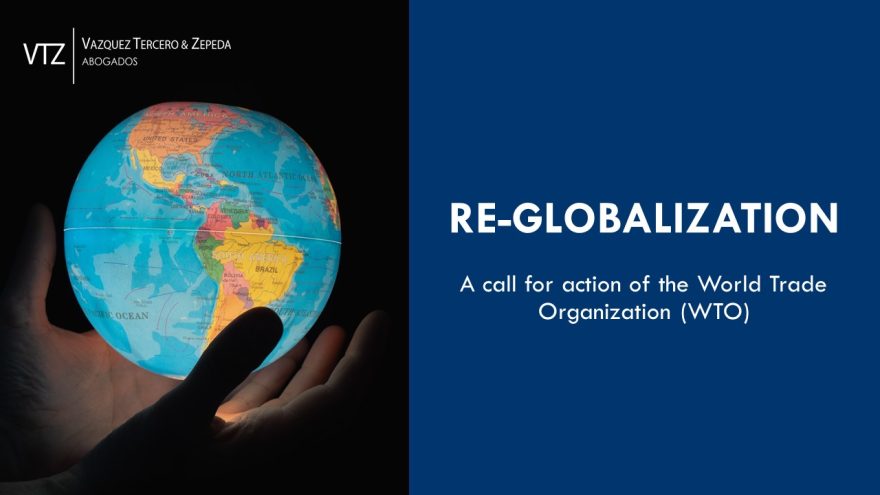Automotive Rules of Origin Dispute
USMCA's Panel Report
Background
Mexico and Canada initiated a dispute against the United States of America (USA) pursuant to Article 31.4. of the USMCA regarding the USA’s methodologies to determine whether a vehicle is originating, namely whether the core parts for vehicles are eligible to benefit from the “roll-up” methodology when determining the regional content of vehicles. The case is known as the «United States – Automotive Rules of Origin». The USMCA Panel issued the final report on December 14, 2022, but it was published on Wednesday, January 11, 2023, resolving in favor of Mexico and Canada. VTZ shares key aspects concerning the dispute and report.
Timeline
VTZ notes that this dispute was resolved in a “speedy” manner. Mexico requested consultations on August 20, 2021, but the establishment of the panel was made on March 22, 2022, when the parties (including Canada) agreed on the panelists. If one considers the date that Mexico requested consultations and the final report, the dispute lasted 482 days (or 1 year, 3 months, 25 days). But, if one considers the date that the panel was established, then the dispute took only 268 days (or 8 months, 23 days). Below, we share some key dates of the dispute:
-
Request for consultations August 20, 2021
Mexico requested consultations with the United States.
-
Canada joins the consultation August 26, 2021
Canada notified its intention to participate in the consultations.
-
Consultations September 24, 2021
The Parties held Consultations.
-
Request for Panel January 6, 2022
Mexico requested the establishment of a panel.
-
Canada joins the dispute January 13, 2022
Canada notified its intention to join the dispute.
-
Selection of panelists March 22, 2022
The parties agreed on the selection of the panelists.
-
Hearings August 2 and 3, 2022
The Panel held a hearing with the parties.
-
Initial Report November 10, 2022
The Panel issued its Initial Report
-
Comments to Initial Report November 29, 2022
The Parties provided comments on the Panel’s Initial Report
-
Final Report December 14, 2022
The Panel issued its final report.
-
Final Report was made public January 11, 2023
The Panel’s Final Report was made public.
Preliminary considerations
Chapter 4 USMCA provides that for a vehicle, passenger vehicle or truck to receive preferential tariff treatment, such good must meet, among other requirements, a Regional Value Content (RVC). In this sense, Article 4.5 USMCA refers to the methods that producers may use to determine the RVC of a good.
Article 4.5.4 USMCA was at the center of this dispute, and it is known as the «roll-up» provision. Basically, this provision establishes that the value of non-originating materials used in the production of a subsequent good shall not be included for the purposes of calculating the good’s RVC.
In other words, if a good qualifies as originating per USMCA’s Rule of Origin, the producer does not need to determine the value of non-originating materials because such good is considered 100% originating when it is used in the production of another subsequent good. However, this dispute entailed different interpretations concerning the “roll-up” provision applicable to the auto industry.
The case of automotive goods receives special attention. The Autos Appendix of Chapter 4 USMCA establishes several additional provisions, such as steel and aluminum requirements, labor requirements, among others.
Moreover, Article 8 of the Autos Appendix requires the USCMA Parties to allow Alternative Staging Regimes (ASRs). An ASR allows an auto-producer to import passenger vehicles or light trucks under a different set of RVC requirements than the general terms set forth in the USMCA’s Auto Appendix. The ASR has the feature that an auto-producer may request approval of an ASR for no more than 10% of its total production of passenger vehicles or light trucks in the territories of the USMCA parties.
Article 8.1 requires the USMCA parties to grant access to an ASR to passenger vehicles or light trucks producers for a period ending no later than January 1, 2025, or five years after USMCA’s entry into force.
Article 4.5 of the USMCA
The Roll-Up Provision
The dispute began as a result of different interpretations by the United States, on the one hand, and Mexico and Canada, on the other hand, concerning the rules of origin for vehicles and light trucks set forth in Article 4.5 USMCA and Article 3 Autos Appendix. Specifically, the RVC calculation for the vehicle’s core part and finished vehicles.
The Different Interpretations of the Rules of Origin for Autos
Mexico and Canada
Mexico and Canada’s interpretation was that Article 4.5 USMCA allows auto producers to determine the RVC of vehicles in accordance with the methodology of articles 3.7 to 3.9 of the Autos Appendix; these provisions relate to the requirements to which the core parts of the vehicle must qualify as originating and the methodologies that producers may use to calculate the core parts’ RVC. For clarity purposes, article 3.9 refers to the «super-core» alternative.
That is, if according to the RVC methodologies, the producer determines that a vehicle “core part” or «super core» is originating, then this auto part is considered to have a 100% RVC when calculating the vehicle’s total RVC. In other words, the USMCA provides a single unified methodology for the RVC calculation of core parts (and super-core parts) and finished vehicles.
United States
Unlike Mexico and Canada, the United States submitted that the vehicle’s core parts (or super-core parts) considered as originating should not be treated as having 100% of RVC when calculating the RVC of the finished vehicle.
In short, the United States argues that Article 3 of the Autos Appendix establishes two distinct requirements that a vehicle must meet: (1) the «origination requirement» of the core parts and (2) the general RVC requirement of the finished vehicle.
The Panel’s analysis
The Panel established that Article 3.7 of the Autos Appendix is silent on whether the results of the core parts RVC calculations can be used, or not, for calculating the finished vehicles’ RVC.
Nonetheless, the Panel mentioned that this silence must be considered in light of the roll-up provision, i.e. Article 4.5.4 USMCA. According to the Panel, Article 4.5.4 USMCA does not need to be repeated in Article 3 of the Autos Appendix to be applicable to said goods (i.e. passenger vehicles or light trucks); furthermore, Articles 3.7 through 3.9 of the Autos Appendix do not include any carve-out or exception regarding the roll-up provision applicable to the core parts or super-core. It is undeniable that core parts, whether indicated in the terms used in Table A.1 or Table A.2, are included in the final vehicle.
As noted above, article 4.5 USMCA stood out in the dispute. This provision establishes that the value of non-originating materials of an originating good, which is used in the production of a subsequent good, shall not be included for the purposes of calculating the good’s RVC.
The Panel agreed on Mexico and Canada’s interpretation that when core parts (or super-core) are originating, they are eligible to benefit from the roll-up opportunity when determining the RVC of the vehicle.
Conclusion
Article 8 of the Autos Appendix
The Claim
Mexico and Canada also raised a claim concerning Article 8 of USMCA’s Appendix to Annex 4-B (Autos Appendix). Mexico and Canada argued that the United States established requirements for producers to access its Alternative Staging Regime (ASR) that were beyond this provision. In response, the United States claimed that its ASR was consistent with its USMCA obligations.
In a nutshell, the points of contention were whether the United States established requirements that went beyond the Autos Appendix in relation to its ASR approval letters and whether the United States violated the USMCA in doing so.
What is an ASR?
An ASR is a special regime for passenger vehicles and light trucks producers to benefit from USMCA tariff preferences, even if their products cannot fully comply with the regular rules of origin. Given the high RVC established in the auto sector, the USMCA Parties agreed to establish a temporal system that could allow auto-producers to meet USMCA’s auto rules of origin; hence, the ASR. In general, the ASR rules of origin are less strict than USMCA’s regular auto-rules of origin regime. Article 8.2 of Autos Appendix establishes rules concerning the Regional Value Content (RVC) of vehicles, the RVC of auto-parts, the amount of steel and aluminum of vehicles, and the Labor Value Content (LVC) of vehicles in relation to ASRs.
Panel analysis on the USA’s ASR Approval Letters
The Panel noted that the United States conditioned its ASR approval letters on ensuring that all vehicles and trucks imported into the USA must meet the requirements of Article 3.7 of the Autos Appendix, that is that core parts must meet their «general» rules of origin to qualify as originating. This was not provided in article 8.2 of the Auto Appendix. In other words, the United States obliged passenger vehicles and light trucks producers to meet requirements other than those of Article 8.2 of the Autos Appendix to access its ASR. Accordingly, the Panel found that the United States did establish requirements beyond the USMCA.
In this regard, the Panel interpreted that Article 8.2 of the Autos Appendix is an exhaustive list of rules of origin for passenger vehicles and light trucks regarding ASRs. As a result, the Panel considered that USMCA Parties are prevented from establishing requirements beyond this provision with regard to their ASRs.
Conclusion
In summary, the Panel concluded that the United States failed to comply with its USMCA obligations because it established ASR requirements for passenger vehicles and light trucks that were beyond those established in Article 8 of the Autos Appendix.
Luz Maria de la Mora, a former undersecretary of foreign trade of Mexico, said that the results of the panel’s report will favor the competitiveness of the region.
¡Iniciando el año con una gran noticia! Celebro el fallo favorable del panel que solicitamos junto con Canadá, con respecto a la interpretación de EE.UU. sobre las Reglas de Origen del sector automotriz contenidas en #TMEC.
— Luz María de la Mora (@luzmadelamora) January 12, 2023
Este fallo fortalece nuestra competitividad como región. https://t.co/81cqgekGF4
What are the next steps in the auto dispute?
Now that the Panel has issued its final report, the USMCA parties must endeavor to agree on the resolution of the dispute. Pursuant to Article 31.18 USMCA, Mexico, Canada, and the United States have 45 days (until the first weeks of February 2023) to reach a resolution that settles the dispute in a satisfactory manner for all.
The resolution can contain the following:
If the USMCA parties fail to agree on a resolution, Mexico and Canada may suspend benefits in the automobile sector to the United States under Article 31.19 of the USMCA. But, if it is not practicable or effective to suspend benefits regarding autos, Mexico and Canada may suspend benefits in other sectors, which may only occur after a review of the Panel as described below.
Furthermore, we cannot rule out the option that an implementation panel may be activated in the event of disagreement with the measures adopted to comply with the report. This procedure is governed by article 31.19 USMCA, whereby the Panel will address, for instance, USA’s measure is in USCMA compliance or not, or whether the level of suspension is excessive. This procedure is similar to that regarding a compliance panel at the WTO per article 21.5 of the Dispute Settlement Understanding.
The disappointing USMCA panel interpretation could result in less North American content in automobiles, less investment across the region, and fewer jobs. pic.twitter.com/kudurXJ4am
— Adam Hodge (@USTRSpox) January 11, 2023
VTZ highlights that this dispute is far from over, take for instance the dispute “Canada– Dairy TRQ Allocation Measures” between the USA and Canada. On December 20, 2021, the Panel issued its finding that Canada is not complying with its USMCA’s obligations. Despite that Canada made some amendments to its TQR measures, the USA continues to consider that Canada is breaching its USMCA’s obligations and, thus, initiated a second “dispute» on May 25, 2022.
Need more information?
VTZ is a firm specialized in International Trade and Customs with extensive experiences advising companies in export and import procedures, as well as complying with tariff and non-tariff restrictions to trade.











